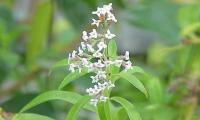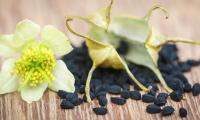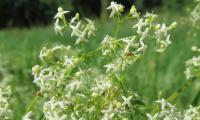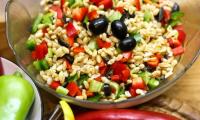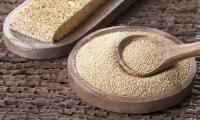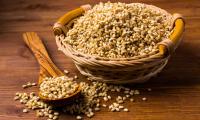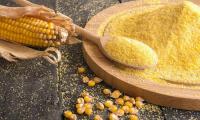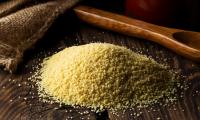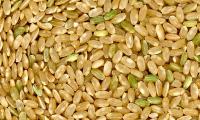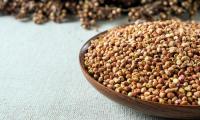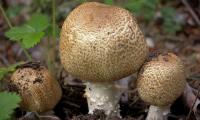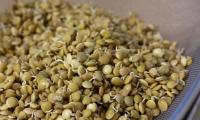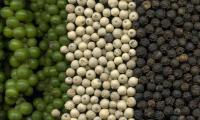The best perspective for your health
The best perspective for your health
The best perspective for your health
The best perspective for your health
Showing 421-440 of 602 items.
-
235 kcal
-
Water 16%
-
58/38/04
-
Ω-6 (LA) 0.28 g
-
Ω-3 (ALA) 0.21 g
The leaves of the lemon verbena (organic?) have a fresh scent when raw, reminiscent of lemon. The aromatic tea is called lemon verbena or verbena.
-
524 kcal
-
Water 4%
-
04/31/65
-
Ω-6 (LA) 8.0 g
-
Ω-3 (ALA) 0.40 g
Black cumin (raw) is known as a spice and medicinal product. It aids digestion and gives dishes a spicy flavor. Organic quality?
-
59 kcal
-
Water 85%
-
72/13/15
-
Ω-6 (LA) 0.08 g
-
Ω-3 (ALA) 0.20 g
Flowers and leaves of meadow sage (Salvia pratensis) are used raw (organic?) as an ingredient in many dishes. As a medicinal plant, it inhibits fungi, viruses a
-
70 kcal
-
Water 75%
-
60/38/02
-
Ω-6 (LA) 0.03 g
-
Ω-3 (ALA) 0.07 g
Garlic mustard, which is rich in vitamin C, is best eaten raw. When cooked, the taste reminiscent of garlic, mustard and pepper evaporates. Organic?
-
272 kcal
-
-
71/26/03
-
Ω-6 (LA) 0 g
-
Ω-3 (ALA) 0 g
The wild mallow (Cheeseweed) is one of the oldest medicinal plants and has been well researched in clinical studies. It is used raw or dried. Organic?
-
33 kcal
-
Water 88%
-
88/09/03
-
Ω-6 (LA) 0 g
-
Ω-3 (ALA) 0 g
Common chickweed (chickweed) is a nutrient-rich and versatile food plant that is available in the wild almost all year round. Organic?
-
0 kcal
-
-
00/00/00
-
Ω-6 (LA) 0 g
-
Ω-3 (ALA) 0 g
The shoots and flowers of the meadow bedstraw (Galium mollugo) are edible raw. The seeds are suitable for sprouting and the flowers are a popular flavoring. Org
-
92 kcal
-
Water 83%
-
52/08/40
-
Ω-6 (LA) 2.6 g
-
Ω-3 (ALA) 1.8 g
Raw sea buckthorn berries taste very sour and tart. Sea buckthorn has a lot of vitamin C. Organic quality? Does it contain vitamin B12?
-
132 kcal
-
Water 65%
-
81/17/02
-
Ω-6 (LA) 0 g
-
Ω-3 (ALA) 0 g
Cooked Kamut or Khorasan wheat is a good side dish for many dishes, similar to rice. Organic quality?
-
371 kcal
-
Water 11%
-
76/16/08
-
Ω-6 (LA) 2.7 g
-
Ω-3 (ALA) 0.04 g
Amaranth (amaranth seeds, kiwicha, raw) contains a balanced amino acid composition and 14% more protein than grains. Gluten-free. Organic?
-
352 kcal
-
Water 10%
-
88/11/01
-
Ω-6 (LA) 0.50 g
-
Ω-3 (ALA) 0.06 g
Pearl barley or barley groats are ground barley grains (raw?). Unlike wheat and spelt, barley contains very little gluten. Organic quality?
-
361 kcal
-
Water 11%
-
88/08/04
-
Ω-6 (LA) 1.7 g
-
Ω-3 (ALA) 0.05 g
Whole grain corn flour is gluten-free and finer than corn semolina. It consists of ground corn kernels (raw?) and is used for cooking or baking. Organic quality
-
376 kcal
-
Water 9%
-
85/14/01
-
Ω-6 (LA) 0.24 g
-
Ω-3 (ALA) 0.01 g
Couscous, dried (kuskus), is a vegan precursor made from semolina (not raw) and made from millet, durum wheat, spelt or barley (organic?).
-
362 kcal
-
Water 12%
-
88/09/03
-
Ω-6 (LA) 0.92 g
-
Ω-3 (ALA) 0.04 g
Wholegrain rice, medium grain (organic?), is brown rice, not hulled and tastes good as a healthy risotto. All vitamins and minerals are retained when eaten raw.
-
329 kcal
-
Water 12%
-
84/12/04
-
Ω-6 (LA) 1.5 g
-
Ω-3 (ALA) 0.06 g
Raw sorghum (sweet millet): Sorghum grains are slightly larger than those of common millet. The seeds from this family of sweet grasses are gluten-free. Organic
-
22 kcal
-
Water 92%
-
49/46/05
-
Ω-6 (LA) 0.16 g
-
Ω-3 (ALA) 0 g
Giant mushrooms are edible raw and can be used in a similar way to cultivated mushrooms. Depending on the location, they can accumulate cadmium. Only wild-growi
-
582 kcal
-
Water 10%
-
41/07/52
-
Ω-6 (LA) 1.1 g
-
Ω-3 (ALA) 0.03 g
Dark chocolate coating (couverture) with coconut oil is a cocoa-based glaze. It is easy to make yourself and is suitable for coating baked goods. Organic?
-
73 kcal
-
Water 78%
-
90/10/00
-
Ω-6 (LA) 0.17 g
-
Ω-3 (ALA) 0.04 g
Jerusalem artichokes have a sweet, nutty taste and can be eaten raw. They have a variety of health benefits and are suitable for diabetics. Organic?
-
106 kcal
-
Water 67%
-
70/28/02
-
Ω-6 (LA) 0.18 g
-
Ω-3 (ALA) 0.04 g
Sprouted lentils (Erve) have a slightly sweet and nutty taste. They can be used raw or cooked. Make sure they are organic.
-
251 kcal
-
Water 12%
-
82/13/04
-
Ω-6 (LA) 0.69 g
-
Ω-3 (ALA) 0.15 g
Green pepper means unripe peppercorns that taste very mild. Usually available pickled, dried or frozen (and organic), rarely raw.

